When the Endangered Species Act was passed 50 years ago, in 1973, some of North America’s most iconic animals were on the brink of extinction.
Bald eagles — the nation’s symbol — were in sharp decline, along with peregrine falcons and other birds of prey, from the effects of the pesticide DDT. Apex predators, like the gray wolf, had also been nearly wiped out in much of the country. The picture was no better in our oceans, where whales were being driven from existence by commercial whaling, just as we were learning they could sing.
But a growing environmental movement — one that united people on both sides of the political aisle — helped turn the tide.
“Nothing is more priceless and more worthy of preservation than the rich array of animal life with which our country has been blessed,” said President Richard Nixon on signing the landmark legislation.
Even before that major milestone, UC scientists, biologists, veterinarians and researchers were on the frontlines of wildlife conservation, a role they continue to play today. UC faculty, students and staff helped peregrine falcons return to California’s skies, launched a successful breeding program of critically endangered white abalone, and helped the Channel Island fox make the fastest recovery from the endangered species list of any mammal before it.
Those are just a few of the animals that UC is working to safeguard for the future, at home and around the world:
(Click the links for a shortcut to each.)
Peregrine falcons
Weedy seadragons
Snowy plovers
Stephens’ kangaroo rat
Desert tortoise
Channel Island foxes
White abalone
Mountain gorillas
Blue whales
Southern sea otters
The world’s fastest animal streaks back from the brink
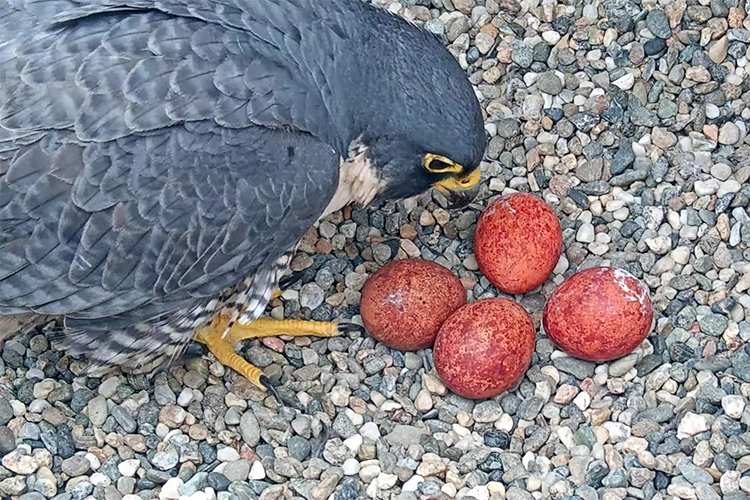
It’s not hyperbole to say that UC Santa Cruz helped save the fastest animal on earth from extinction. Peregrine falcons, which fly at speeds of up to 200 miles per hour, were nearly wiped out across North America in the 1960s from the widespread use of the pesticide DDT.
As recently as 1970, wildlife biologists knew of only two pairs of peregrine falcons nesting in all of California. With the birds nearly extinct, the Santa Cruz Predatory Bird Research Group was formed on the UC Santa Cruz campus, led by veterinarian James Roush, the late UC Santa Cruz biologist Kenneth Norris and Brian Walton, the group’s first leader. Faculty and students bred adult falcons in captivity, artificially incubated wild eggs that were thinned by DDT, and placed fostered chicks into wild nests.
By 1998, thanks in part to those efforts, there were approximately 750 peregrine falcons in California, including 150 nesting pairs. The U.S. Fish and Wildlife Service removed the peregrine falcon from the endangered species list the following year.
Today, DDT is banned from agricultural use, and peregrine falcon numbers have continued to rebound. Biologists estimate there are now as many as 400 mated pairs streaking through California’s skies, including YouTube celebrities Annie and Lou, who incubated four eggs atop UC Berkeley’s campanile bell tower this spring, and are now tending their young chicks. (The UC Davis Medical Center has their own pair, too.)
The return of peregrine falcons is one of the most dramatic examples of success under the Endangered Species Act, which was signed into law fifty years ago this December.
Read more: Peregrine falcons fly higher, thanks to UC Santa Cruz's Predatory Bird Research Group (UC Santa Cruz)
A baby boom of wondrous weedy seadragons
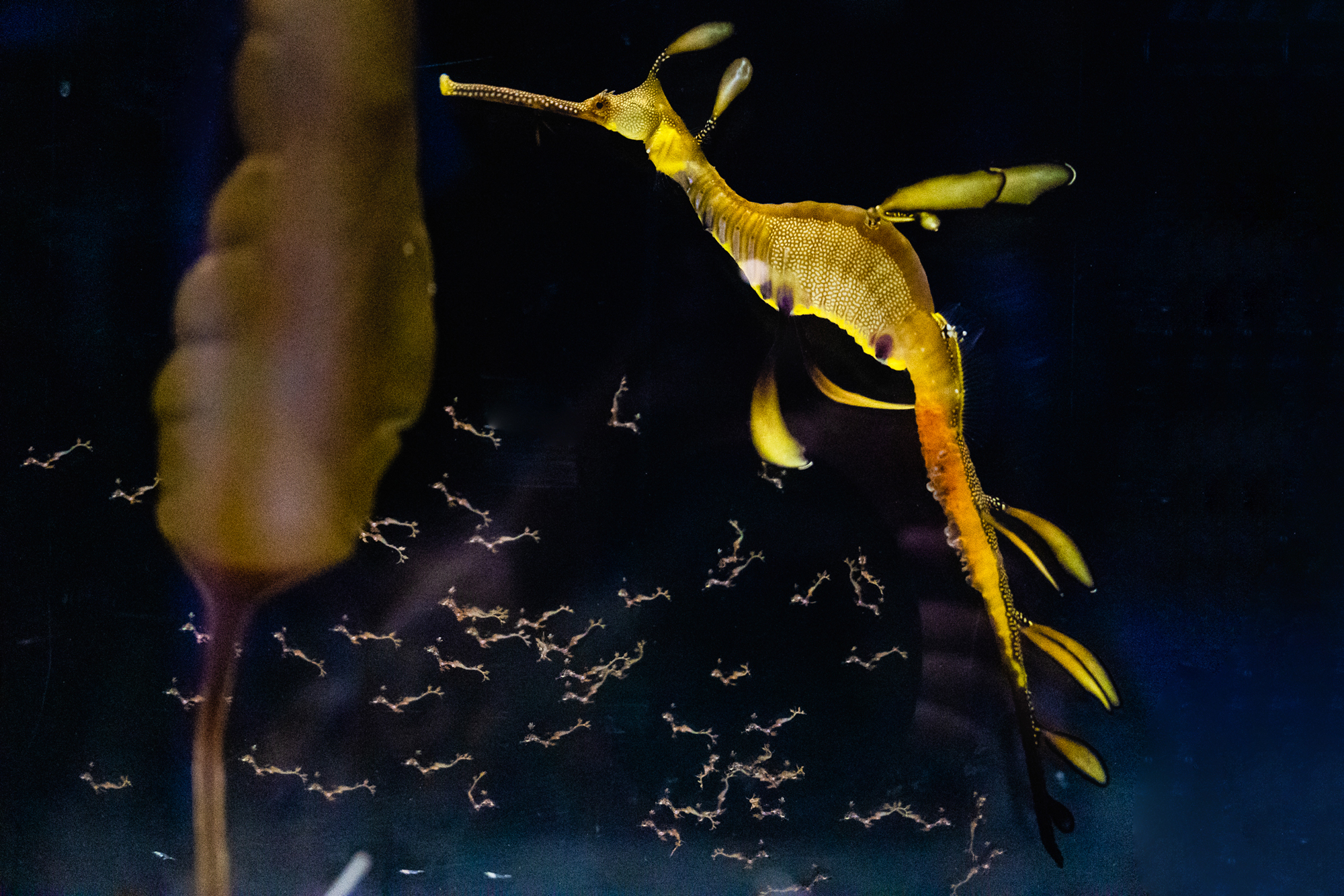
Birch Aquarium at Scripps Institution of Oceanography at UC San Diego is celebrating the birth this spring of 70 baby seadragons. The happy event brings a surge of hope for this beautiful animal, one of the few species where the male carries the eggs until they hatch.
Weedy seadragons are normally found off the southern coast of Australia, where they rely on their uncanny camouflage to evade predators as they drift among kelp and seagrass. But global threats, including ocean warming, loss of habitat, and pollution, have proven harder to avoid. They are listed as “near threatened” by the International Union for Conservation of Nature.
With this spring’s baby boom, Birch Aquarium is now one of only a handful of aquariums in the world that has successfully bred weedy seadragons in captivity, a major milestone on the road to ensuring a future for this weird and wondrous creature.
“This is huge for us. We’ve been working on this for decades,” said Associate Curator Leslee Matsushige who leads Birch Aquarium’s Seahorse and Seadragon Breeding Programs. “This is a very challenging yet exciting process. We've had some previous experience raising young seadragons, so we hope to be successful raising an even greater number of babies this year.”
Read more: Birch Aquarium welcomes baby seadragons (UC San Diego)
Sharing the beach with tiny Western snowy plovers
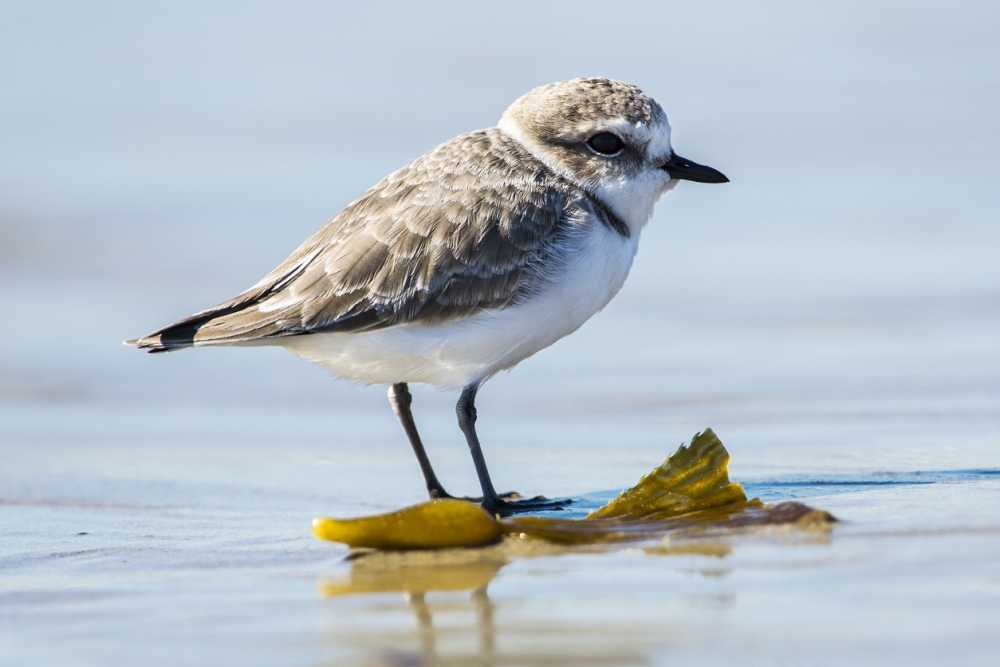
They’re tiny, fluffy and almost perfectly camouflaged against the sand dunes of the upper beach at UC Santa Barbara’s Coal Oil Point Reserve. But for all their diminutive size and near invisibility, endangered Western snowy plovers have staged a spectacular comeback over the past 20 years.
When Cristina Sandoval came aboard as the reserve’s director in 2000, snowy plovers hadn’t nested there in more than 40 years, pushed out by foot traffic and other disturbances.
“Sometimes birders would count 100 plovers in the early morning, and they would all be gone from Sands Beach by afternoon. In their place, the beach would be full of beach towels, dogs, parties and even an occasional car,” Sandoval recalled.
Conversations with nature-loving locals led to the idea of a plover protection program, an ambitious project with the goal of having the birds nesting again on the beaches with minimal disturbance. With the guidance of the U.S. Fish and Wildlife Service, staff and volunteers at Coal Oil Point Reserve began years of education and awareness-building on behalf of the snowy plovers. Docents and interns stationed themselves at strategic points on the sand to protect the birds and their sensitive habitat. Educational signage asked people to share the beach with the birds, and volunteers helped provide care for abandoned eggs and chicks.
“Our first goal was to manage people, not plovers,” Sandoval said. “We wanted to teach people to share the beach with plovers and create a win-win management plan that allowed for the plovers to live in peace and the people to recreate.”
In 2001, a friend of Sandoval’s spotted a chick in the dunes at Sands Beach, the first in decades. Today, Coal Oil Point Reserve hosts hundreds of plovers during their seasonal winter aggregation, averaging 30 fledged chicks per year.
Having plovers successfully breeding again is proof that conflicts between wildlife and humans can be solved, Sandoval said. That’s an important idea to hang on to, especially as increasing human population density continues to push the boundaries between urban and wild spaces. And climate change adds a new dimension to species conservation.
“We have to always be looking 50 years ahead,” she said. “These days, conservation is not only about protecting habitat; it is also about creating resilience to a changing world.”
Read more: Celebrating 20 years of western snowy plovers (UC Santa Barbara)
How the Stephens’ kangaroo rat hopped off the endangered species list
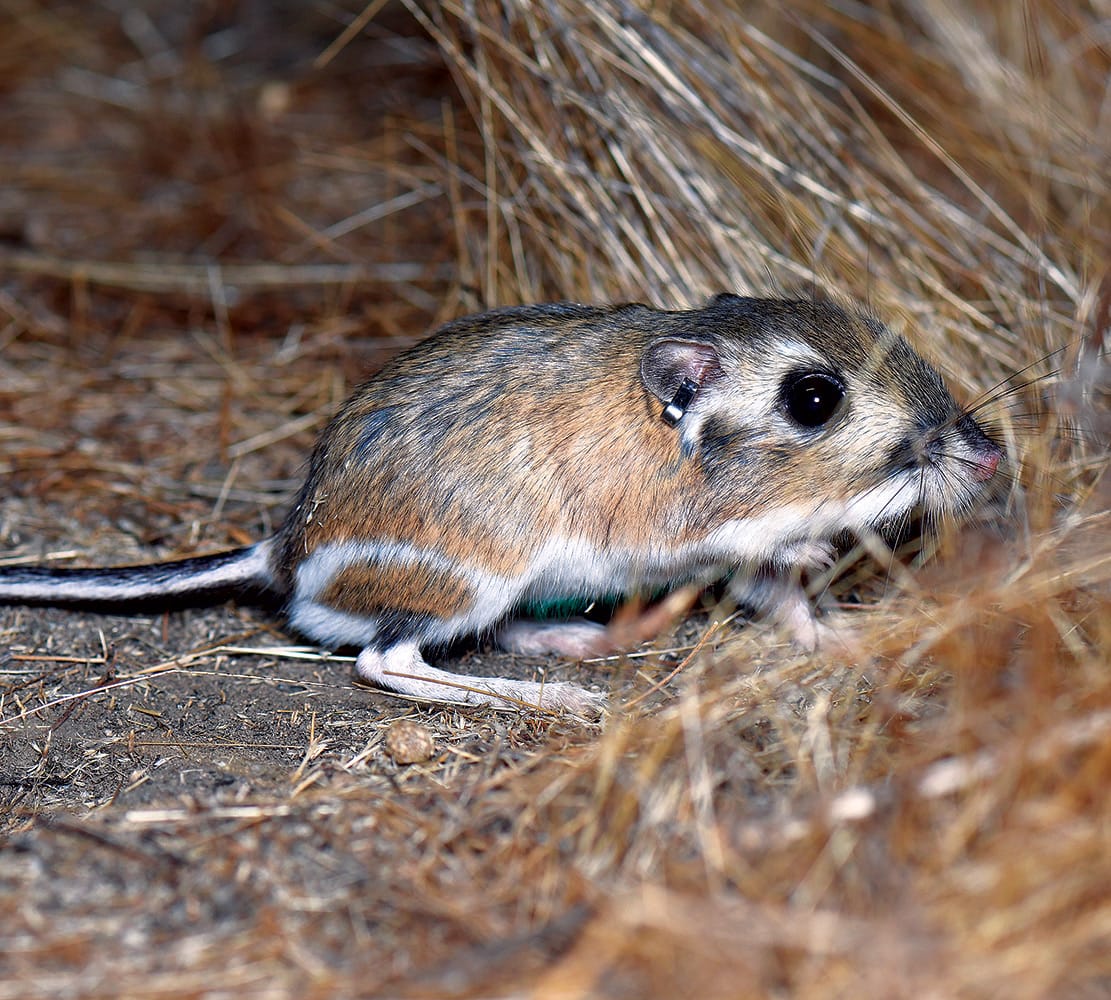
California has been able to remove the gentle, seed-eating Stephens’ kangaroo rat from the endangered species list in 2022, thanks in large part to the efforts of one man. Joseph Messin is assistant director at the Motte Rimrock Reserve, an area of natural, undeveloped land managed by UC Riverside on the western edge of the Perris Valley.
For more than two decades, Messin has been tracking Stephens’ kangaroo rats to help policymakers learn whether efforts to save the species are working.
Though their longevity is still in question due to climate change and habitat loss, the state downlisted the rats from endangered to threatened, and while there is still some danger of development encroaching on parts of the rats’ habitat, a sizeable amount of grassland has now been set aside and protected for them.
The change in status is a win for many who find the rats charming. Resembling hamsters with long tails and oversized hind feet, the small rodents are endemic to Southern California — primarily Riverside County — and are known to have a friendly disposition. They also hop on their hind legs, similar to kangaroos.
“They’re not aggressive. They don’t seem concerned with having people around at all,” Messin said. “They sometimes hang out in the area after being released from a trap, even hopping onto our boots.”
Their ecological importance, however, goes beyond their charm. They’re a keystone species, meaning other animals, like owls, snakes, coyotes, and bobcats, depend on them for their own survival.
Recently, Riverside County bestowed an award on the Motte Rimrock Reserve for helping conserve the Stephens’ kangaroo rat.
“It’s a nice story because they were in such terrible danger, and now they’re not,” said Kimberly Hammond, faculty director of UC Riverside’s natural reserve lands. “Though the reserve received the award, it was Joe that did all the work.”
Read more: A kangaroo rat’s tale (UC Riverside Magazine)
A boxy bellwether for climate change
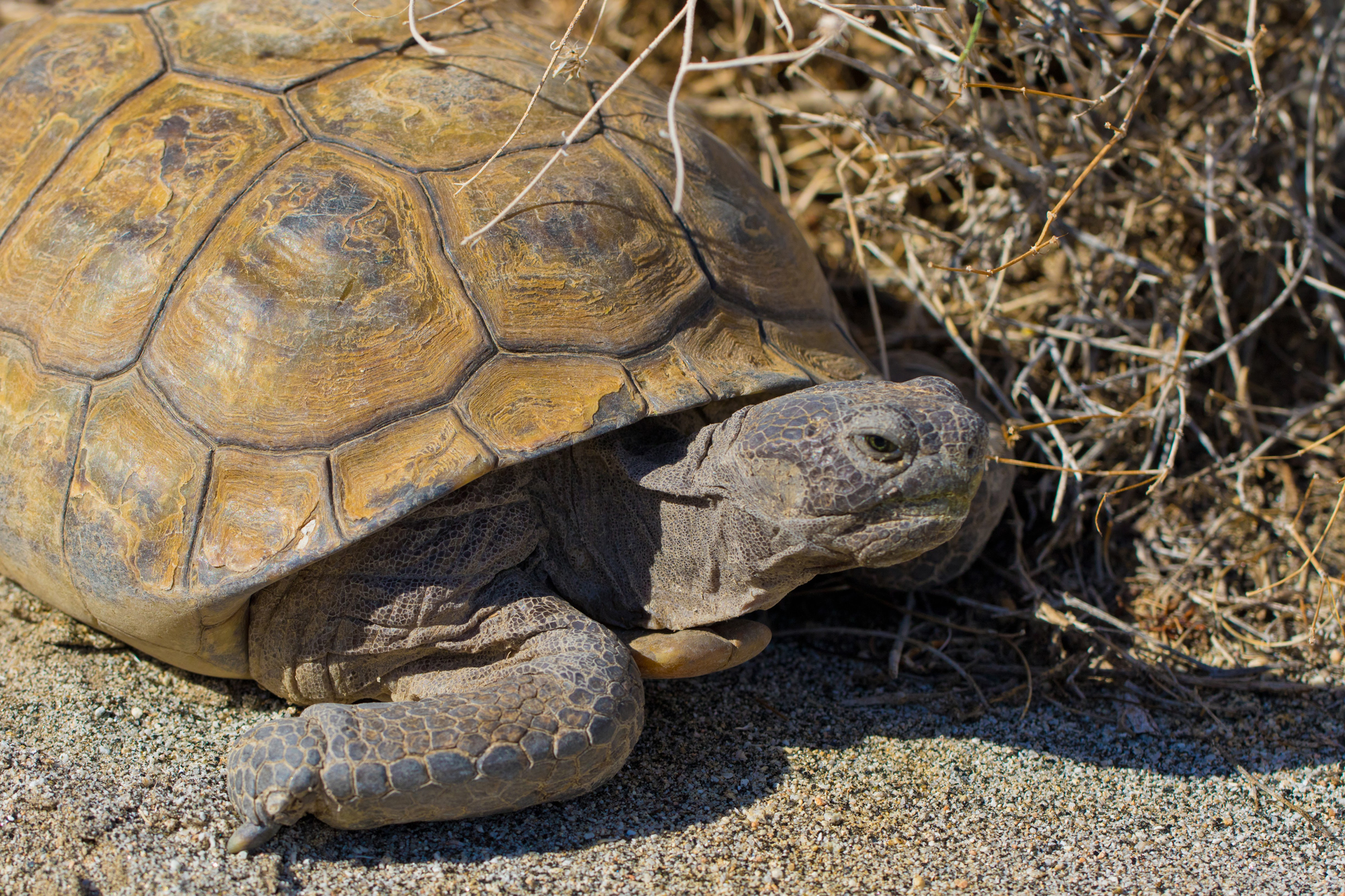
Established in 1958 as a living laboratory for all things desert, from soil analysis to bighorn sheep, the Philip L. Boyd Deep Canyon Desert Research Center, part of UC’s Natural Reserve System, was nonetheless not thought to be good desert tortoise habitat. But four years ago, U.S. Geological Survey research ecologist Jeffrey E. Lovich and reserve director Christopher R. Tracy realized a hardy little band of tortoises had been eking out an existence there on the UC Riverside-managed land, in conditions far hotter and drier than other tortoises have to face — conditions that may preview a future profoundly affected by climate change.
The Deep Canyon population of at least 13 — including Al and Violet, named after the former reserve director Al Muth and his wife, Violet Nakayama — are a breeding population that ended up in the canyon perhaps thousands of years ago. Lovich is using the reserve to try to answer questions about the population’s size and genetic connections, and what these tortoises are doing differently to adapt to this harshest of environments, particularly in a drought that is hitting the area harder than any in the past 1200 years. Reduced water and food, plus temperatures that drive them underground for over 90 percent of their lives, are not their only climate-related threats; secondary effects, like increased predation by coyotes during drought, are a peril to their survival, too. Lovich is now embarking upon a project to collect the Deep Canyon tortoises’ DNA and sequence their genome for more adaptation clues. The species as a whole is already threatened; their population declined from 2004 to 2014 by 37 percent, or nearly 124,050 adult individuals. “Our tortoises may be bellwethers of climate change for other populations,” Lovich says.
America’s tiniest fox stages a comeback on the Channel Islands
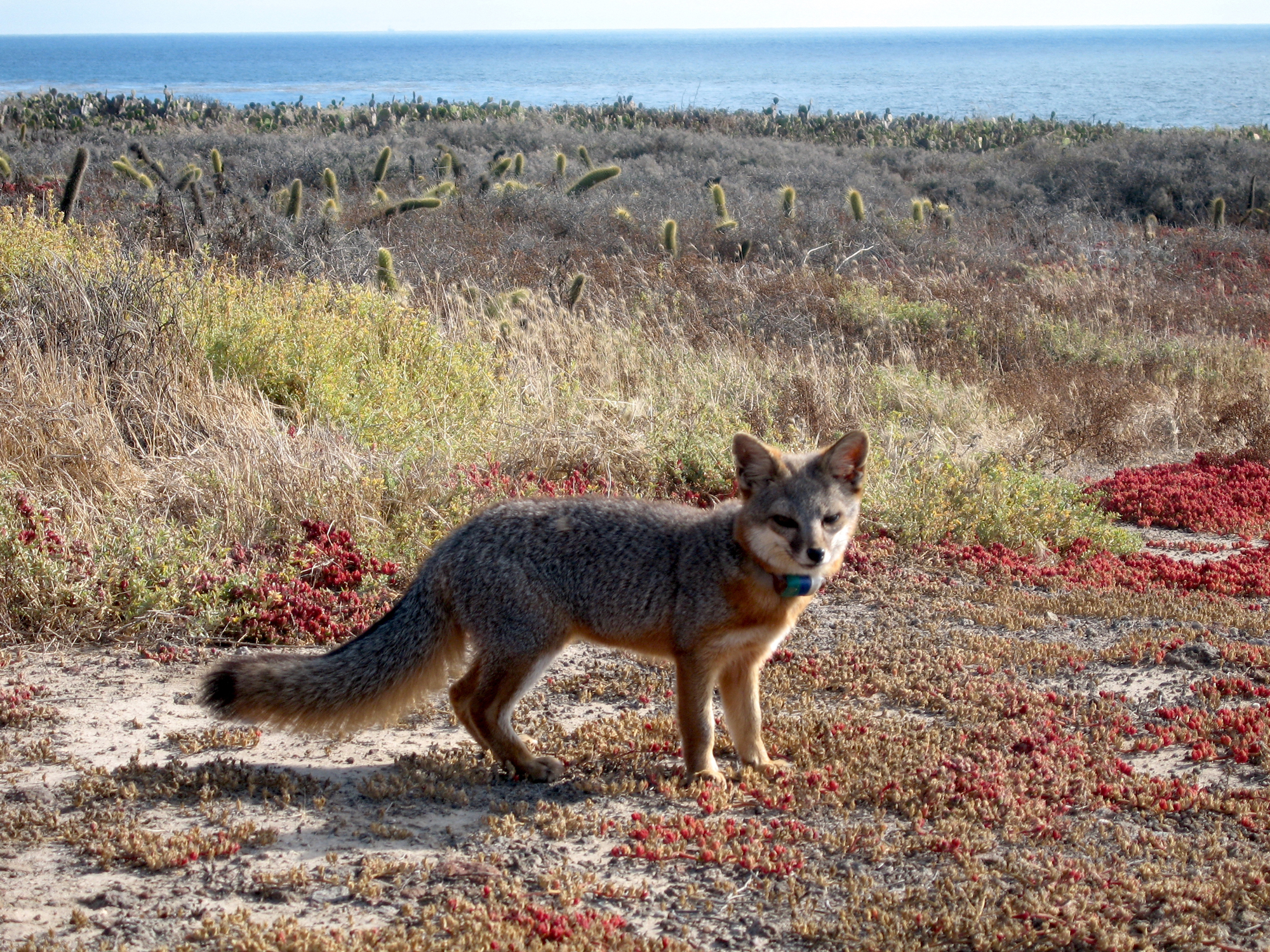
Off the coast of Southern California stretches an island chain known as North America’s Galapagos — and not without reason. For thousands of years, the eight Channel Islands have been home to a variety of unique species left to evolve without interference from the mainland, including the foxes, spotted skunks and scrub jays that bear the Channel Islands in their names. The tiny Channel Island fox is the only carnivore unique to California and each of the six islands it calls home has its own distinct subspecies. But these idyllic conditions meant island foxes were sitting ducks when a variety of human-induced threats hit all at once in the late 90s.
“They evolved without predators for thousands of years, so never needed to worry about looking up,” explains Dr. Jessica Sanchez, a postdoctoral fellow in Disease Investigations at the San Diego Zoo Wildlife Alliance who has been part of island fox recovery efforts since graduating from UC Davis in 2006. For the foxes on the three northern islands, Santa Cruz, Santa Rosa, and San Miguel, that led to a precipitous decline when transient golden eagles moved in to replace the native bald eagles whose population was decimated by DDT. Bald eagles primarily feed on fish; the larger golden eagles were able to snatch pups and adults with ease. By 2000, only 15 foxes were left on each of the San Miguel and Santa Rosa Islands.
As if that wasn’t enough, the number of foxes on Santa Catalina Island plunged by more than 90 percent in less than one year due to the introduction of canine distemper. One of the earliest people to sound the alarm on the foxes’ fate was Lyndal Laughrin, the former director of UC Santa Barbara’s Santa Cruz Island Reserve, who had been working with the foxes for decades.
A complex and coordinated strategy sprang into action, aimed not just at repopulating foxes but restoring their environment. That meant removing invasive species, from golden eagles to feral pigs and removing non-native fennel. It meant breeding foxes in captivity and reintroducing bald eagles to their native habitat. On Santa Catalina Island, it meant vaccinating animals for distemper, which likely originated from a stowaway raccoon. (Foxes on all the Channel Islands are now vaccinated for canine distemper and rabies as a cautionary measure).
The operation worked. The three island fox subspecies subject to golden eagle predation recovered so quickly that they became the fastest mammals to ever be delisted from the Endangered Species Act; the Santa Catalina subspecies was downgraded in concern to “threatened.” It’s one of the most successful recovery programs in the Endangered Species Act’s 50-year history. As the Channel Island Fox Working Group approaches its 25th anniversary meeting in May, Sanchez notes that the recovery program has not ended — it’s evolved to include a fuller view of the ecosystem, how it could be affected by environmental pollutants and pressures, climate change and whatever else may come.
“Island foxes are sentinels,” she says. “Animals, plants, ecosystems, they’re telling us what could happen to us — and we should really be paying attention to that.”
Spawning a new generation of white abalone

Everything from the smooth voice of Barry White to “mood lighting” has been used to help endangered white abalone reproduce at the UC Davis Bodega Marine Laboratory. This sea snail needs the help, as 99 percent of their population was wiped out by commercial fishing in just 10 years in the 1970s. By the time commercial abalone fishing was banned in the 1990s, the remaining abalone were so far apart from each other that the tiny eggs and sperm they release for reproduction could not meet and make new babies. Divers collected wild abalone to try to breed them domestically, but as often happens with all kinds of wild species, breeding proved challenging. A successful spawning in 2001, for example, yielded millions of embryos, with 100,000 making it through their first life stages — only for 95 percent of the abalone parents and children to be wiped out by the bacterium behind Withering Syndrome.
In 2011, the White Abalone Captive Breeding Program moved to UC Davis Bodega Marine Laboratory, where cold seawater provided protection from Withering Syndrome, and fortunes began to change. In 2012, the matchmaking scientists announced the first successful spawning of the species in nearly a decade. The program continues to grow.
“We’ve gone from producing handfuls of 1-year-old abalone a year to tens of thousands annually, with 11 partner institutions throughout California and Baja holding live white abalone,” said Alyssa Frederick, director of the program. More than 10,000 white abalone have been released into the wild, and new diet and hormone tools are under development to increase the population further. “We’re still an order of magnitude below what is needed to save the species,” notes Frederick. “We need to act quickly.” Frederick hopes the path to recovery will provide a model for the other abalone species on the West Coast, all seven of which are under threat.
Answering Dian Fossey’s call
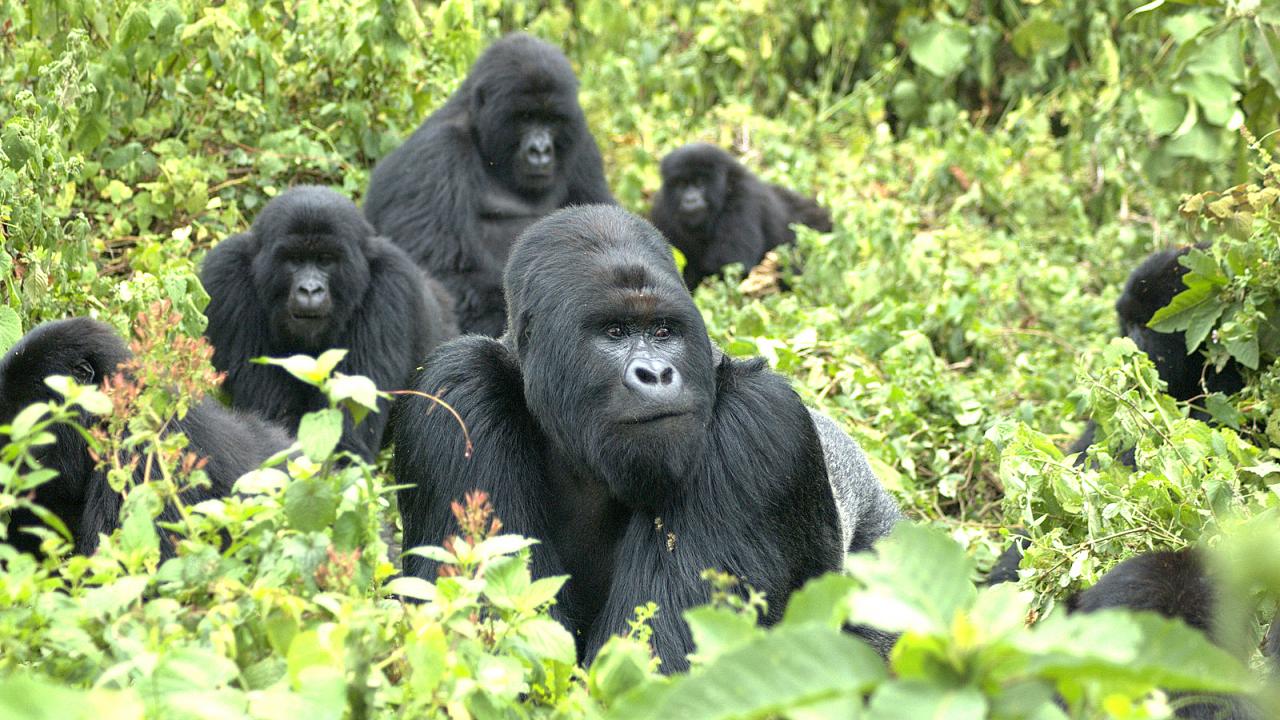
According to mountain gorilla lore, the late biologist Dian Fossey made a grim prediction at a conference in the early 1980s: that without a veterinarian on site, mountain gorillas would be extinct by the year 2000. Philanthropist Ruth Morris Keesling of the Morris Animal Foundation (MAF) family, in attendance, listened.
Thanks to the generosity of Keesling and MAF, Fossey was able to hire the first vet for the gorillas, Dr. James Foster. Though Fossey was tragically murdered in Rwanda in 1985 before Dr. Foster could arrive, his commitment remained unwavering, and a new chapter for the gorillas began. Today, mountain gorillas have doubled in population thanks to conservation efforts in the Democratic Republic of the Congo, Rwanda and Uganda, and their veterinary care has grown into the organization known as Gorilla Doctors. Co-led by UC Davis and the Mountain Gorilla Veterinary Project, it keeps a watchful eye on the population and its susceptibility to human threats, including disease.
“They’re good patients,” laughs Amy Bond, chief communications officer of Gorilla Doctors. Around 50 percent of mountain gorillas are habituated to humans, meaning they don’t run away when they see us. Each animal is uniquely identifiable by their noseprint, like a human fingerprint; the Gorilla Doctors monitor individual gorilla health and conduct scientific research to examine population-level health trends. Prior to the arrival of Gorilla Doctors, one of the main threats to gorillas were injuries from snares, which could lead to infection and a painful death (even if intended for other animals — young gorillas are curious). Today, anti-poaching patrols monitor the gorillas daily, taking note of any major wounds or illness in order to alert the Gorilla Doctors, who can be in the forest treating them the same day. In cases of severe illness, the doctors can dart the gorilla with medicine from a safe distance while the animal is surrounded by family, distracting them from the prick of the dart, much as one does a child with a shot.
Mountain gorillas are the only great ape in the wild whose numbers are increasing; and while gorillas still get caught in snares, mortality from snares has declined. Starting in 2006, the doctors expanded to monitor the health of the critically endangered eastern lowland, or Grauer’s gorilla, in the Democratic Republic of Congo. In 2009, they partnered with UC Davis’ One Health Institute to begin sampling wildlife — rodents, bats and nonhuman primates — for the presence of pathogens with pandemic potential. Gorillas live in areas densely populated with humans and our close genetic relationship makes gorillas susceptible to human pathogens (and vice versa).
Gorilla Doctors are unique; they work closely with local governments and receive international attention. But how climate change will affect the gorillas in their care is still evolving; the changing climate could potentially impact food availability, or increase the elevation range of mosquitos, which could then increase the risk of new diseases to mountain gorillas, Bond says. Still, she is optimistic.
“The more you’re on the front lines, tackling the challenges, the more you have hope,” she says. “Because you know there are people who care and are doing something about it.”
Blue whales are at just a fraction of their historic population. Here’s how we can protect them
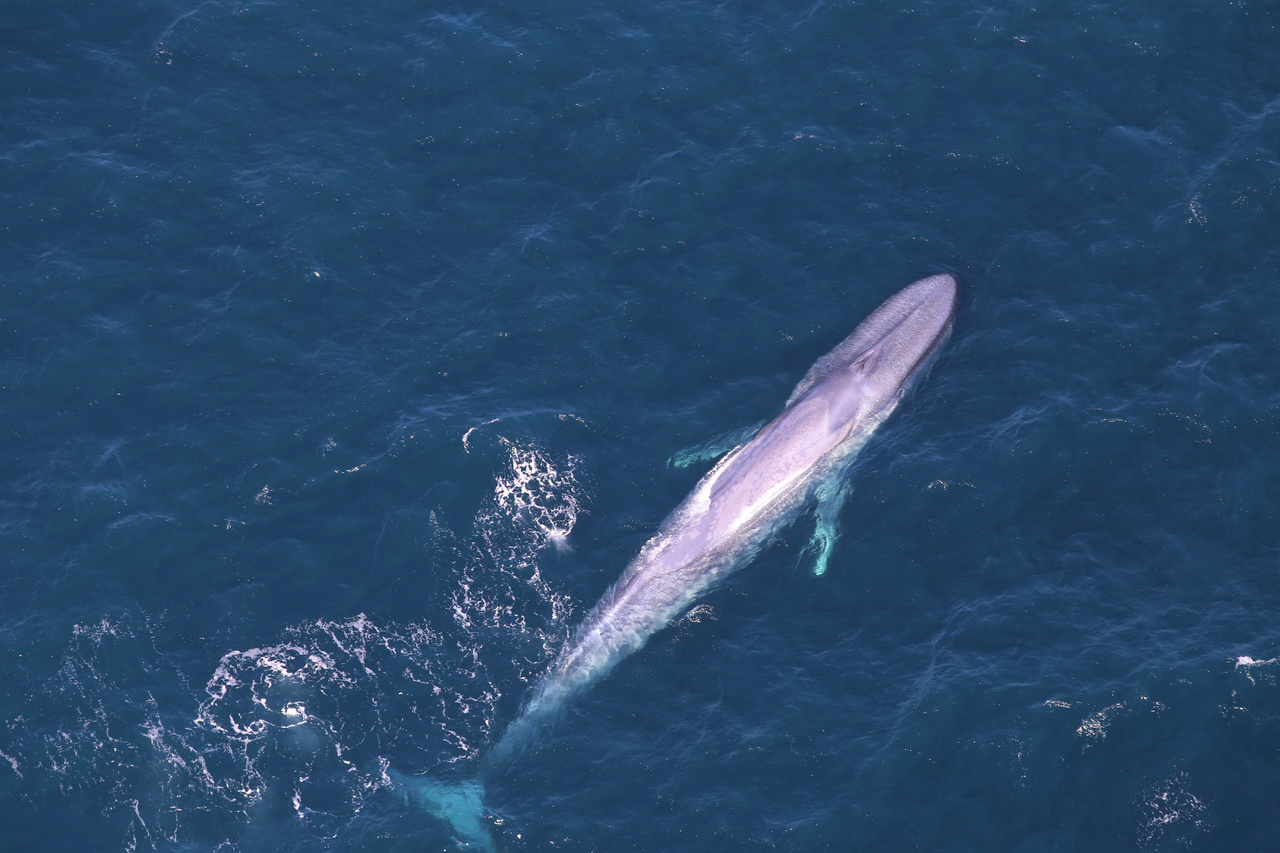
The largest animal to ever have lived on Earth swims right along the California coast. Up to 90 feet long, blue whales sing songs to each other that can travel halfway across the world. But these magnificent mammals were nearly silenced forever by commercial whaling, which was finally banned in 1986.
By then, some whales, like the Atlantic gray, had become extinct. Other species have stabilized, if only to a fraction of their original populations. Blue whales were particularly overhunted, prized for their enormous size. Scientists estimate that blue whales are now at anywhere from 11 to 3 percent of their global historic population.
Even with whaling almost entirely gone, blue whales face a number of serious threats. “It’s never been a more dangerous time to be a whale,” says Douglas McCauley, UC Santa Barbara professor of ocean science and director of the Benioff Ocean Science Laboratory, an applied ocean research center based at UC Santa Barbara's Marine Science Institute.
Today, one of the top sources of whale mortality is ship strikes. As large as a blue whale might be, container ships are nearly 13 times their size. Collisions, which are most likely to occur when whales come up for air, are nearly always fatal. McCauley calls it a “solvable problem” and has come up with a tool that can warn ships to slow down and take precautions if whales are likely to be in the area. Learn more about McCauley’s project, Whale Safe, and the success it is having in protecting one of the biggest creatures on the planet in the link below.
Read more: How we can protect our last remaining blue whales, the world’s largest-ever animal (UC Newsroom)
Helping sea otters thrive
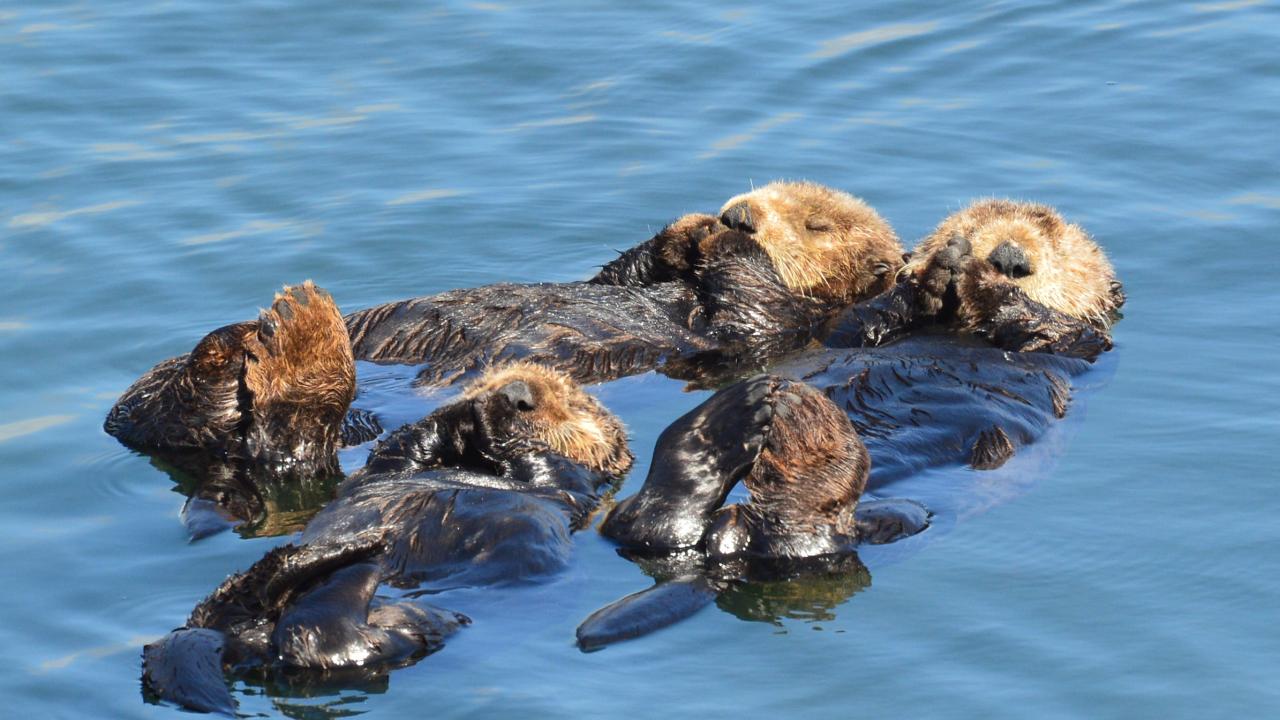
Driving down Highway 1 along the Big Sur coast in California, you may be dazzled by how the sea meets the sky. But when this highway was under construction, California’s citizens were dazzled by another discovery — the existence of several dozen southern sea otters that were previously thought to have been hunted to extinction for their thick fur pelts.
Before they were nearly wiped out, southern sea otters numbered 16 to 20,000 and ranged from the Oregon coast into Mexico. Today, about 3,000 southern sea otters bob along the Central California coast, all descendants of this tiny remnant colony. Scientists would like to see the population grow so they can delist sea otters as “threatened.” But coastal pollution, along with other threats such as limited range expansion and white shark predation, make this difficult.
“There’s a lot of healthy otters out there,” says Dr. Melissa Miller, a veterinarian and pathologist with the California Department of Fish and Wildlife and a UC Davis One Health Institute affiliate based at the UC Santa Cruz marine campus. “But what continues to astound me about sea otters is they’re one of the best sentinels I’ve ever seen for ocean health.”
Case in point: Four otters recently necropsied by Dr. Miller died from a rare strain of a microscopic parasite known as Toxoplasma gondii, possibly acquired through filter-feeding shellfish. Toxoplasma infection is common in people — it infects as many as 60 million Americans and isn’t usually fatal to healthy humans. But the degraded state of many of California’s watersheds (what she calls “the kidneys of the environment”), means that otters are more exposed than ever to new variants of parasites, pollutants, and toxins, including some that can also affect people.
When these unusual cases were detected, Miller called her long-term collaborator Dr. Karen Shapiro, a UC Davis veterinarian whose team conducts genetic analyses to help trace the origins of mysterious parasites. Dr. Shapiro’s team discovered that all four sea otters were infected with the same unusual strain of Toxoplasma; interestingly this rare strain (called COUG) was first reported from mountain lions in Canada and was never before reported in aquatic animals. This discovery helped put health and environment officials on alert that the parasite could potentially pose risks to other marine life, or people, especially pregnant or immunocompromised individuals, if they ingest raw or undercooked shellfish. Although the researchers emphasize that there are no confirmed human health risks from the COUG Toxoplasma strain at present, it’s a clear reminder of how closely connected marine and terrestrial environments are — and how much we depend on healthy ecosystems, like natural wetlands and robust kelp forests, to minimize health risks to both people and wildlife.
“Sea otters and Toxoplasma are canaries in a coal mine,” Shapiro says. “They tell us when something has shifted.” When sea otters can thrive, it’s a good sign that other animals, and people, will thrive, too.
Special thanks to our colleagues Kat Kerlin at UC Davis, Jules Bernstein at UC Riverside, Sonia Fernandez at UC Santa Barbara and Tim Stephens at UC Santa Cruz for contributing to this story.

